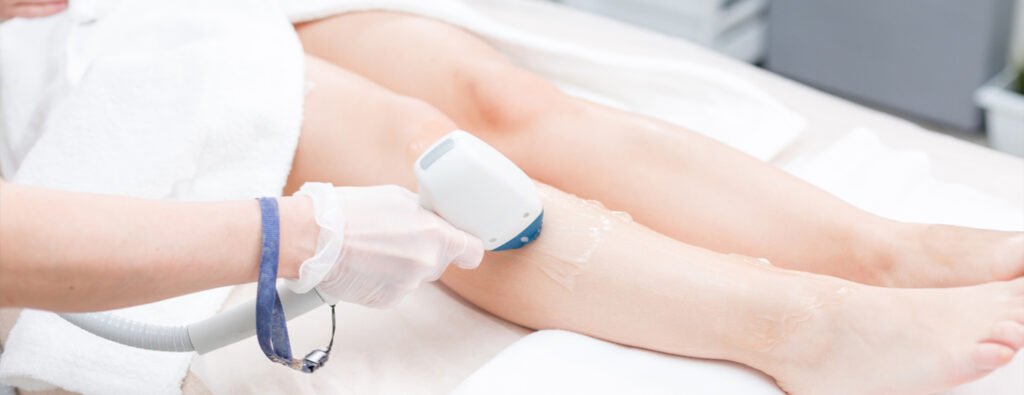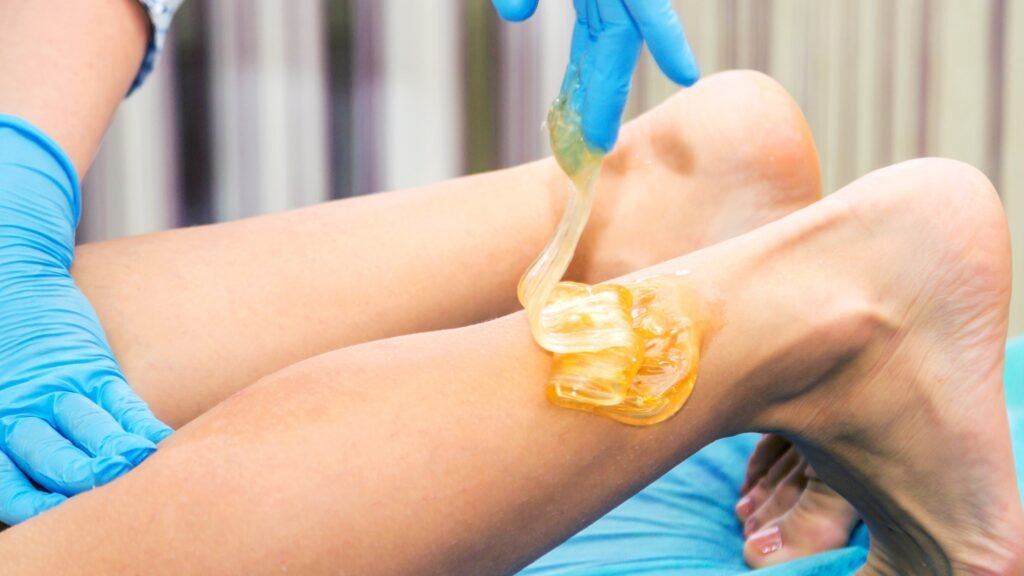
Hair removal customers seek advice from spa professionals on how to maintain and extend the results of their treatment, so it is crucial that spa professionals can offer them helpful guidance. Below are a few pre and post hair removal care dos and don’ts which will assist them with keeping in the best possible shape for their treatments:
Avoid prolonged sun exposure prior to laser hair treatments as this can darken the skin, diminishing the strength of light used for targeting hair follicles.
Waxing
Waxing may offer relief for those suffering from razor burn or other symptoms of shaving irritation, and waxing offers long-term smooth skin benefits without irritation. But there are certain considerations you should keep in mind regarding the process: selecting an appropriate wax product based on your skin type is of utmost importance as different formulas contain different chemicals that could irritate, while others contain natural ingredients that will be gentler on your skin.
Before visiting a salon, it’s advisable to prepare the area by moisturizing it a few days beforehand – this will allow the wax to adhere properly and reduce pain. Furthermore, tanning beds, saunas and hot baths should also be avoided since heat exposure can open pores and hair follicles leading to ingrown hairs becoming vulnerable and potentially vulnerable.
Waxing can also help weaken hair follicles over time, making future regrowth finer and less thickly than without waxing. While this process may take months to take effect, waxing provides another great way to reduce shaving frequency while providing smooth skin for an extended period.
At the beginning of a waxing procedure, a trained technician will apply a pre-wax treatment with an application tool such as a popsicle stick to prepare your skin before applying wax in the direction of growth and covering it with either cloth or paper strips until pulling off. Following that, post-wax treatments may also be applied to soothe skin irritation and help avoid future ingrown hairs.
Tweezing
Tweezing is an at-home hair removal method you can do in the comfort of your own home, suitable for shaping eyebrows or removing stray hairs from other parts of the face and body. In addition, it’s an excellent maintenance technique post-wax or shave to help shape areas post-shave. Tweezing works by directly targeting each hair follicle and pulling them out from their roots, which results in slower hair regrowth than with shaving or hair removal creams.
Tweezing may be an effective way to remove unwanted hairs, but when done incorrectly it can become damaging. According to research published in Dermatology journal, women who regularly tweeze their eyebrows can develop ingrown hairs which become red and irritated, potentially becoming sources of infection.
To avoid ingrown hairs, use these tips:
Before tweezing, make sure that your skin is clean and dry. Washing your face with warm water to loosen hair follicles makes tweezing easier, and exfoliating can remove dead cells that prevent new hairs from growing from existing follicles.
After you tweeze, it is recommended to apply aloe vera gel directly onto the affected area for post-tweezing care. It contains soothing properties that will reduce inflammation and redness caused by hair removal.
Plucking
Pros: Plucking can be used precisely and precisely for eyebrow hair, whiskers and small patches of unwanted hair. Plucking also removes the entire root of each individual follicle to slow regrowth. Cons: However, plucking can take more time and be painful on sensitive areas; ingrown hairs should also be an issue when plucking. Be sure to sterilize your tweezers beforehand using antibacterial soap, hydrogen peroxide or alcohol-based products before beginning.
After plucking, always moisturise to reduce red bumps and ingrown hairs. Additionally, regular exfoliating helps remove build-up of sweat, dirt, and dead skin around hair follicles and helps prevent redness from swelling up into red bumps or ingrowns.
Those prone to ingrown hairs should wait several days after plucking to shave or wax; otherwise it could speed up hair follicle growth. Shave or wax when necessary instead.
To prevent red bumps from plucked hairs, be diligent about moisturizing after plucking or waxing with both regular moisturizer and one designed specifically for post-waxing care.
Before plucking, use a powder to absorb excess moisture and make it easier to see the hairs you wish to pull. Talcum powder is an ideal option, helping prevent clogged pores and ingrown hairs as well. For sensitive complexions, choose one free of fragrance and dyes; there are some great talcum powder options at local drugstores or online. Finally, do not rub your skin after plucking; doing so may irritate it further and worsen red bumps if done too frequently; instead try doing it as sparingly if possible if rubbing is unavoidable – try doing it as little as possible or avoid doing it altogether if possible!
Depilatory Creams
Depilatory cream is a topical ointment used to temporarily remove unwanted hair from the face or body. It contains chemical ingredients which break down protein in hair follicles, causing hair to dissolve beneath the surface of skin. You can find such products at both drug stores and grocery stores and should carefully follow all instructions provided with them to avoid skin irritation or accidental over-use.
Depilatories contain strong chemicals, and as such may not be appropriate for all skin types. As always, conducting a skin test prior to using any product should help determine its suitability for you. Furthermore, their results typically last only a few days before unwanted hair resurfaces again.
Hair removal creams don’t compare with shaving or waxing in terms of speed; the product must sit on your skin for at least ten minutes in order to be effective. This allows time for its emulsion to penetrate the hair shafts and break down keratin bonds that hold hairs in place, before you can easily wipe away or shower away the dissolving hair with cloths or showering in order to take effect.
Hair removal creams offer several advantages over shaving, such as not causing razor nicks or cuts on sensitive areas like arms and legs, though it takes multiple applications before smooth and hair-free results are achieved. Unfortunately, chemicals present in such products can sometimes irritate sensitive skin or remain on too long causing side effects like itching, burning or peeling skin as a result of using this hair removal method.
Electrolysis
Electrolysis offers an alternative permanent hair removal treatment. Electrolysis uses a needle-shaped electrode to heat and destroy each individual hair follicle without harming surrounding skin; it has been in use for over 50 years and is the only permanent hair removal treatment recognized by FDA.
Electrolysis works by applying a numbing gel to the skin and inserting a pre-sterilized probe into each follicle, reaching its dermal papilla so the electric current can travel through it and destroy each one with 20 second treatments; hence why completing multiple sessions takes so much time.
Electrolysis treatments vary depending on each person and their unique circumstances, including body area, previous use of temporary hair removal methods, heredity and hormone function as well as medications prescribed to them. All these factors influence how many sessions will be necessary.
Once a consultation with an electrologist has taken place, she or he will devise a personalized and confidential treatment program tailored specifically to your hair removal needs. It is vital that you adhere to this plan in order to maximize follicle destruction for maximum results.
Electrolysis is an extremely safe and painless method for permanently eliminating unwanted hair. Whereas other hair removal treatments may cause irritation or stinging, electrolysis treatment produces no discomfort whatsoever. Some redness or tenderness may occur post-treatment but this typically dissipates within hours or days.


